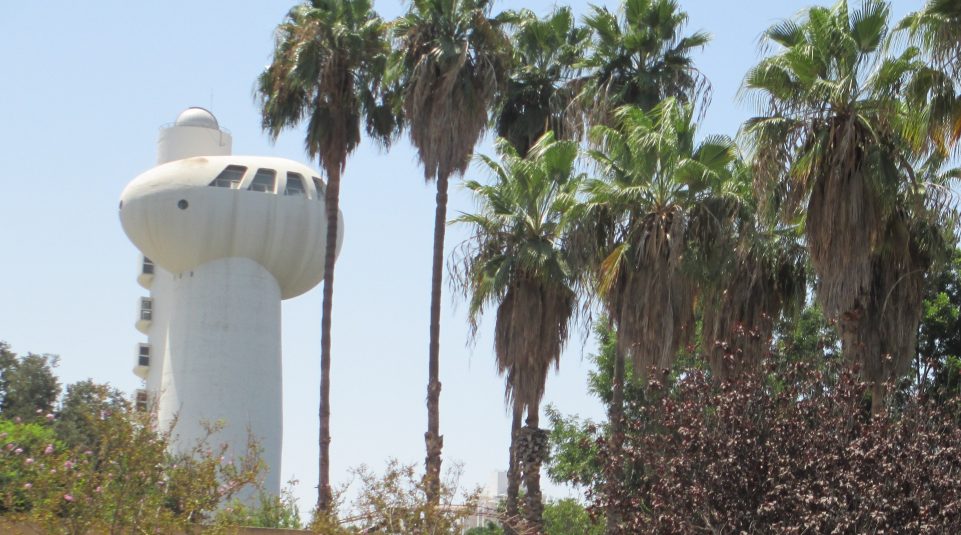Dateline Jerusalem — Rehovot, the city where I reside, is known as the City of Citrus, Culture and Science, its symbols being an orange, book and microscope.
Also known as an academic city because it boasts the Weizmann Institute of Science, the Hebrew University of Jerusalem’s (Israel’s Harvard) only campus outside of Jerusalem, Hebrew U’s Faculty of Agriculture, Food and Environment, Hebrew U’s School of Humanities, and Hebrew U Medical School’s ancillary teaching hospital, Kaplan Hospital.
Rehovot houses the only vet school in the Middle East, the Koret School of Veterinary Science, and the Weitz Center for Sustainable Development. Who can forget that Rehovot’s Science Park is often considered Israel’s answer to the Silicon Valley.
No wonder Rehovot is Israel’s City of Universities, and for having the most academic degrees per capita in Israel.
All this for a city with a population of under 150,000.
The Weizmann Institute of Science, one of the top universities in the world, is named after Chaim Weizmann, scientist and the first President of Israel. His vision was for Israel to become a world leader in science.
Mr. Weizmann, the scientist, was famous for discovering how to produce bacterial fermentation used in the production of cordite explosive propellants. It was critical to the British and Allies war effort during World War I. His discovery was so important that Balfour issued the Balfour Declaration of 1917 that stated in part the British government “views with favor the establishment in Palestine of a national home for the Jewish people.”
The Weizmann Institute has been voted the best university in the world for life scientists to conduct research. It is unique as a research institute only for graduate and post-graduate students.
As Modern as…
However, the Weizmann campus has an outdoor museum originally intended for children, the Clore Garden of Science, with 100 hands-on interactive scientific exhibits.
When I visited there, adults were equally fascinated by the child-friendly scientific experiments. No wonder Israel is a world leader in technology, science, and medicine. The Clore Garden of Science encourages children to love science at an early age.
One of Rehovot’s famous landmarks is the Koffler Particle Accelerator at the Weizmann Institute. In fact, about the only postcards I have been able to find for Rehovot show the Particle Accelerator, which is an atom smasher. The one at Weizmann, although no longer in use there, can be seen from anywhere on campus and from high-rise apartment buildings throughout the city.
Its unusual science fiction-like shape distinguishes it from all other buildings on the campus, a must-see for lovers of architecture.
The building combines an egg-shaped tower and a corkscrew-like tower. It is often described as futuristic and space-age.
The Accelerator uses a pelletron, a research instrument to study the nucleus of an atom. The nuclear physics accelerator examines an atomic nucleus 1/10,000th of the size of an atom. The pelletron is an electrostatic accelerator in which charged particles are accelerated by a static field.
The Weizmann Institute is also known for its Solar Mirror Field.
I walked to the observation deck above the Solar Mirror Field for a better view.
Tracking the Sun
Sixty-four mirrors connect to a computer in the Solar Tower. The computer calculates the location of the sun in relation to the earth every second! The Weizmann field of solar mirrors is one of the leading solar energy research installations in the world.
Science may not be my forte, but I am a frustrated architect.
Graduate school for me was a choice between a masters in architecture or a law degree.
I chose the wrong profession.
Therefore, my favorite spot at the Weizmann Institute of Science is the Weizmann House. Just as the Koffler Accelerator is an architectural phenomenon, so was the Weizmann House in the 1930s.
Built by architect Erich Mendelsohn in 1937, this home to President Chaim Weizmann was architecturally ahead of its time.
Eighty years later, it looks like a modern- day home, both inside and out.
Surrounded by acres of gardens, this U-shaped home has a swimming pool located within the U so that all doors and windows open up to it.
The entrance is guarded by a Ford Lincoln Cosmopolitan, a gift to Mr. Weizmann from Henry Ford II. It is now encased in a glass garage.
The wide entry hall spans the length of the house and has a windowed marble spiral staircase tower that leads to the upstairs bedrooms and bathrooms.
The kitchen is divided into three parts, a room used as a butler’s pantry, a room just for washing dishes and a room with the most modern appliances available 80 years ago. Mr. Weizmann’s study, so large that it is a wing by itself, displays important documents and papers, photographs, paintings, and sculptures, one of which is an over 1200 year old horse.
My favorite room of all is the dining room. It opens to the entry hall and has a view of the spiral staircase tower. On the other side of the dining room are huge floor-to-ceiling picture windows overlooking the glorious gardens surrounding the house.
Heavy floor-to-ceiling carved wooden accordion doors are at both ends of the dining room, opening to the entry hall. The doors are built into a track on the marble floor, closing off the dining room from guests until they could be dramatically opened when dinner was served.
A perfect home for entertaining foreign dignitaries and famous people.
L’hitraot. Shachar

